View a list of Ticks in New Jersey
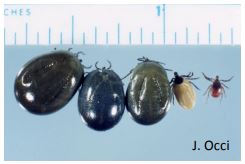
There are many misconceptions about different species of ticks. You may hear “if the tick is small, that means it's a deer tick” or “if the tick is brown, it's a dog tick.”
What this kind of advice fails to take into account is that all hard ticks have 3 life stages of varying size (larva, nymph, adult) and even within a life stage, there is natural variation in both size and color. Additionally, once a tick has started to feed it can grow to quite a large size.
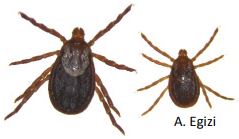
When identifying ticks:
- Don't go by size
- Don't go by color
What to do:
- Do learn the basic tick body parts that are useful for ID
- Do determine life stage and, for adults, whether male or female (some characters used for ID are not present in all life stages)
- Do look at key characters (described below)
Basic Tick Morphology
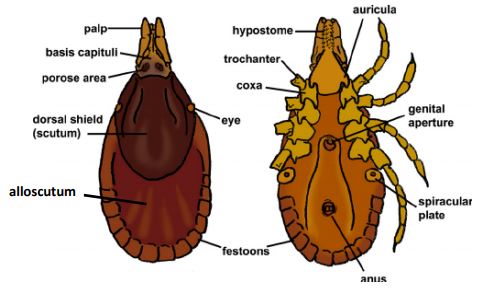
Tick Life Stages
Ticks have three active life stages: larva, nymph, and adult.
- Larval ticks (below) only have 6 legs. All other stages have 8 legs.
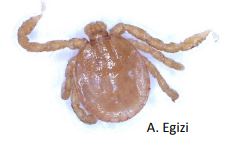
- Adult males do not have an alloscutum. The alloscutum is the area that expands when ticks feed and become engorged with blood. Males do not become engorged. All other stages (larvae, nymphs, and females) have an alloscutum.
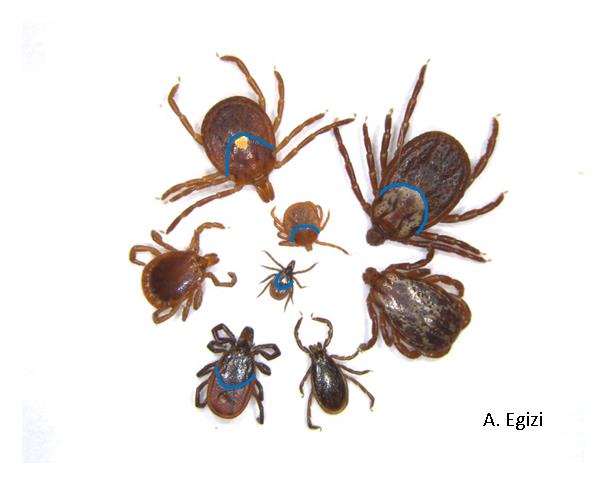
- Larvae and nymphs do not have a genital pore. Adult males and females do.
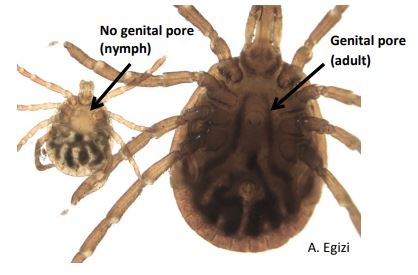
Key Characters for ID of tick genera
- To separate individuals from the genus Ixodes from all other genera, look on the ventral side for the anal groove.

- If you do not have an Ixodes, the next step is to look at the length of the Palps relative to the Basis Capituli.

- If you do not have Ixodes or Amblyomma, look at whether the palps extend laterally. (Read more on identifying the longhorned tick, Haemaphysalis longicornis, here).

- If you do not have Ixodes, Amblyomma or Haemaphysalis, the next place to look is the shape of the Basis Capituli and whether it extends laterally.

These steps should allow you to separate the most common genera of hard ticks in NJ.
Other resources
- Interactive Identification Key for Hard Ticks of the Eastern US (Georgia Southern University)
- TickEncounter Identification Guide (University of Rhode Island)
- Teaching Tick Morphology CD (Armed Forces Pest Management Board)
